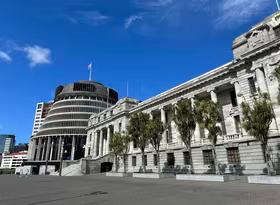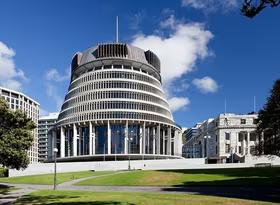Budget delivers few surprises
There were few surprises contained in Bill English’s budget today. Spending restraint remains in place across the board, apart from a limited boost to health and education spending from the next fiscal year in the lead-up to the election. With economic conditions in New Zealand having improved more than expected throughout the first part of 2013 and the outlook becoming increasingly bright, it was also not surprising to see upward revisions to The Treasury’s forecasts of tax revenue. Treasury forecasts suggest that the government is still on track to achieve its target of running an OBEGAL surplus in 2015 and having net debt peak at less than 30% of GDP.
The budget contained little in the way of new tax policy, apart from a small reduction in ACC levies. However, despite this reduction, forecast tax revenue in the budget has been lifted significantly. Interestingly, this more rapid taxation growth is not being driven by stronger forecasts of growth in GDP – in fact, The Treasury’s growth forecasts are similar to those in the Half Year Economic and Fiscal Update (HYEFU). Instead, tax revenue is expected to be pushed up more rapidly by higher effective income tax rates as a result of job creation being centred at the upper end of the income scale and marginal tax thresholds remaining unchanged.
As the domestic economy strengthens, firms will also be able to rebuild their profit margins, which will see corporate taxation growth outpace growth in the general economy. Taxation on investment earnings and increased enforcement measures by IRD, which have exceeded expectations over the past year, are expected to remain strong. However, it is worth noting the downside risk to this forecast should there be a correction in equity markets.
Budget 2013 shows that the government’s tight rein on expenditure is set to continue. Total core crown spending has been reduced by a total of $1.2bn over the next five years compared with what was contained in the HYEFU. A lot of these savings were found by cutting the government’s allowance for unallocated new operating expenditure.
Spending restraint is evident across most functions of government – but, as we had expected, there were still some goodies for health and education in time for next year’s election. Forecast core spending on health over the next five years has been increased by $1.1bn since the HEFU, while forecast spending on education has been lifted by $616m. Health funding has been targeted towards preventative initiatives and the vulnerable, while education spending is targeted at early childhood, primary, and secondary education.
The government expects a new system of dealing with long-term beneficiaries, coupled with improved employment prospects in the labour market, to be contributing $500m per annum of savings on welfare spending by 2016. The government intends to fund a significant expansion in the number of Work and Income staff members in order to better case-manage beneficiaries and help them into work. Given how untested this policy is, significant risks around the size of forecast savings from the programme exist.
A $100m per year provision of extra research and development assistance, as well as additional funding for tourism and the promotion of international education was also announced at the budget. Although spending on research and development is a worthwhile investment, we would argue that tax credits for firms’ research and development spending is a better way forward than cherry-picking funding recipients.
The government has decided that Meridian Energy will be the next state-owned enterprise to be partially sold down, with a sharemarket float pencilled in for October. The timing of the Meridian sale is unlikely to leave enough time for a third SOE listing this year, so we expect the partial sale of Genesis to follow in the first half of 2014.
Proceeds from the SOE sales will be diverted into the Future Investment Fund. The government has announced that it will be funding $426m of the redevelopment of Christchurch and Burwood Hospitals from the fund, as well as boosting investment in the technological capability of schools, KiwiRail’s Turnaround Plan, and irrigation projects. Funding this capital investment from rebalancing the government’s investment portfolio helps keep gross public debt levels in check.
All in all, today’s budget was very much what we had expected from National. Given our optimism for the economic outlook, we believe that the odds of the government achieving a 2015 surplus are looking brighter. However, we remain frustrated at National’s refusal to adequately deal with longer-term structural spending issues. If issues such as superannuation are not confronted soon, it will become increasingly difficult for future governments to maintain a balanced budget over the economic cycle, as a rapidly growing share of resources will need to be directed towards New Zealand’s aging population.




